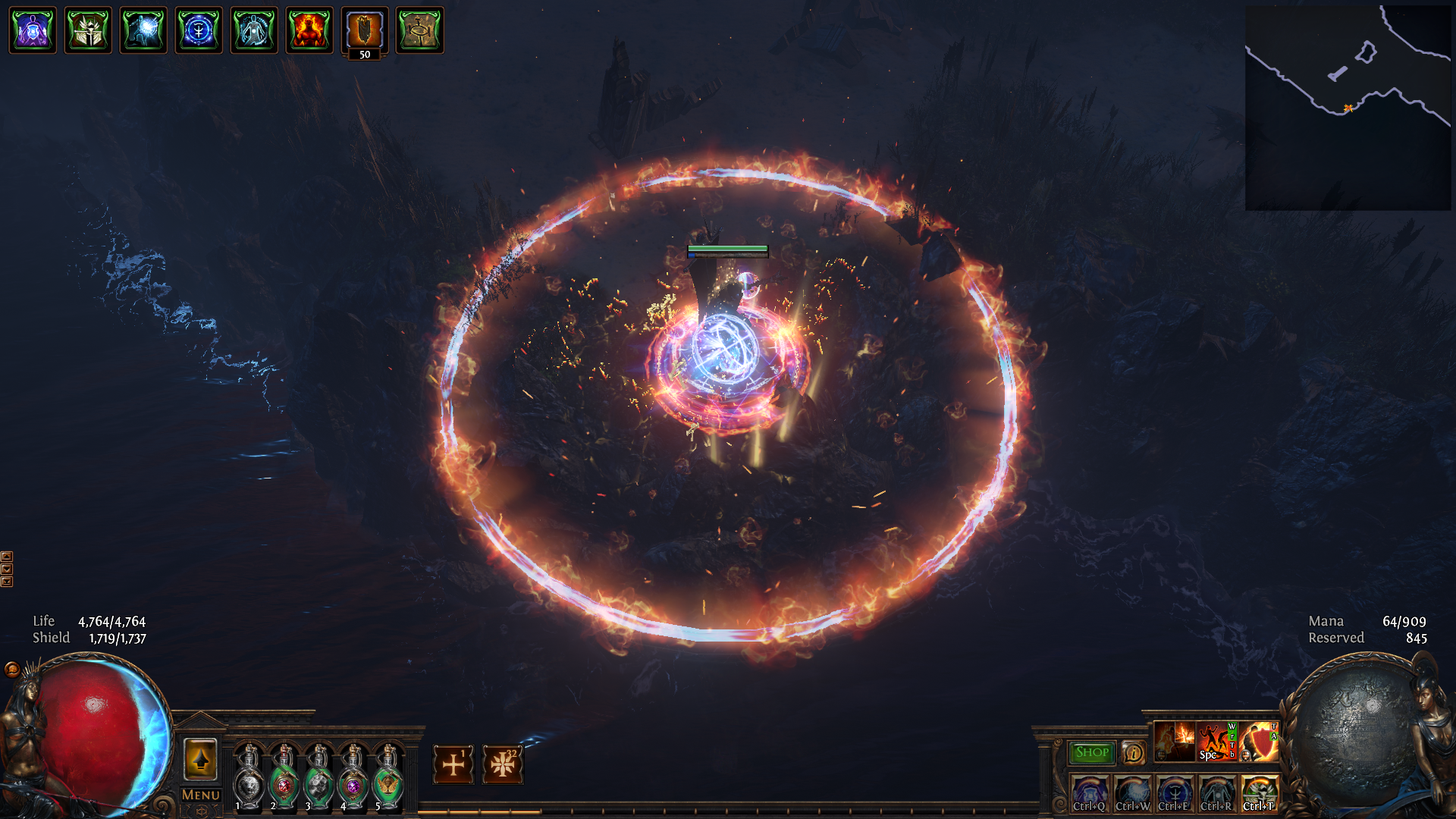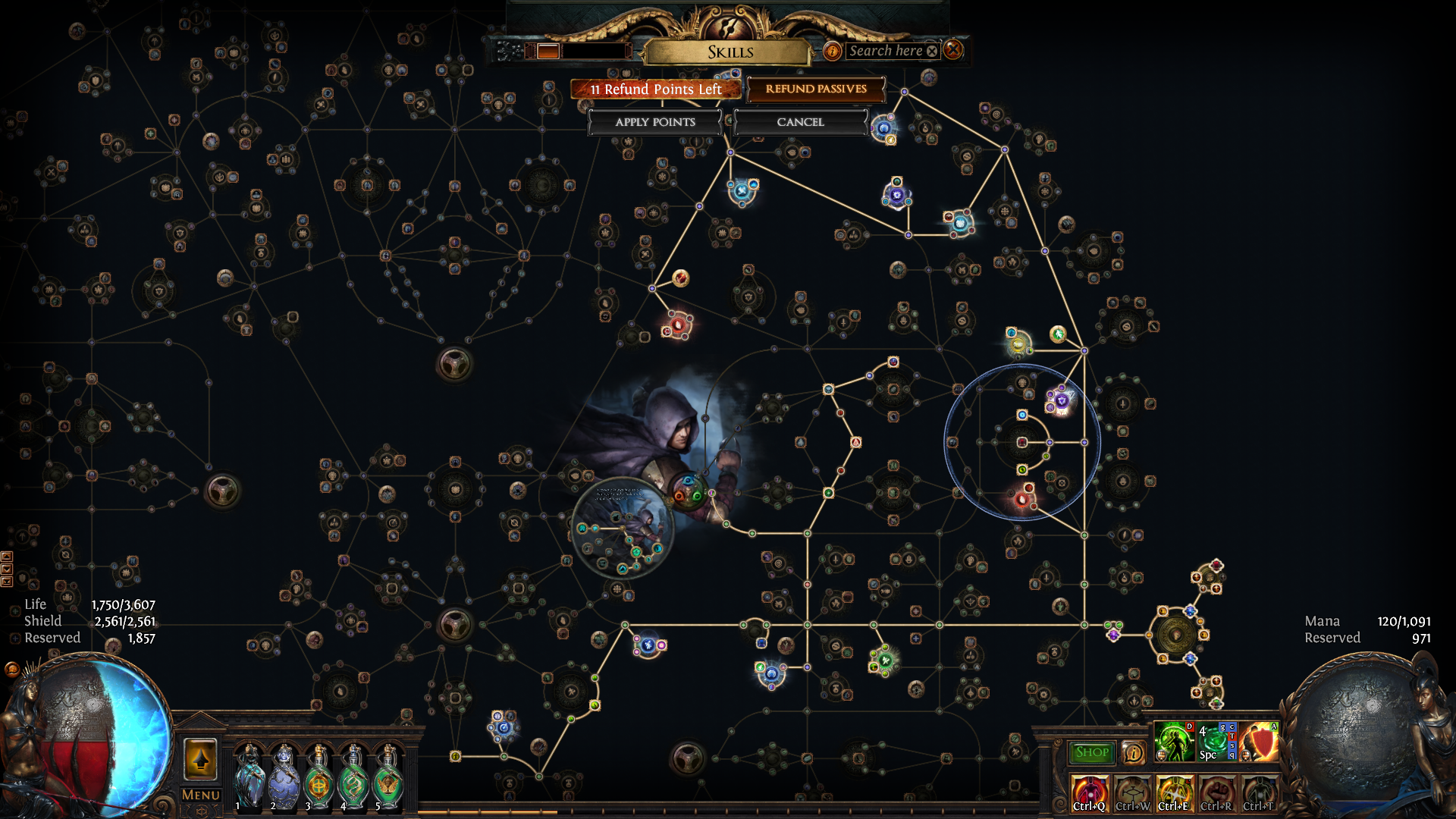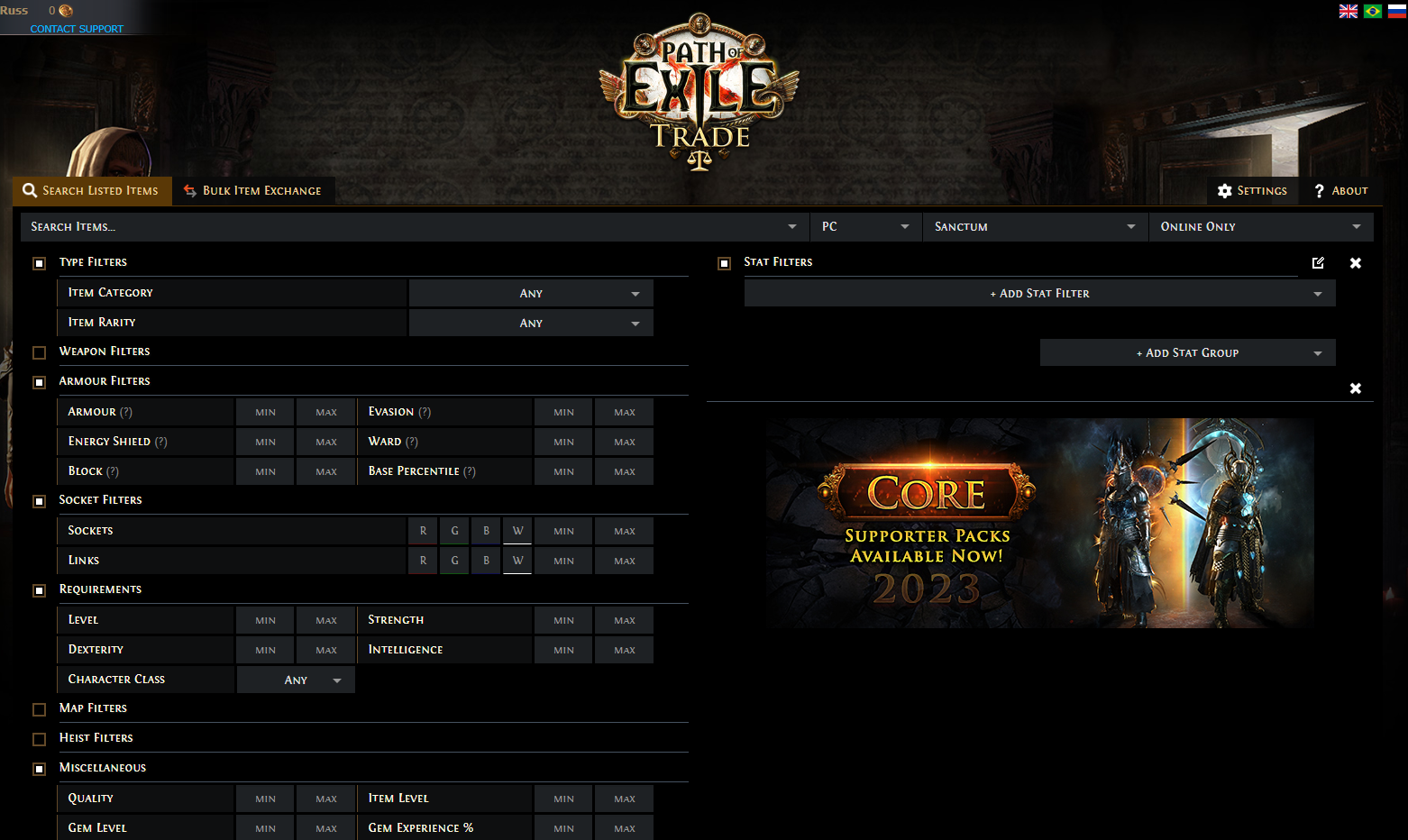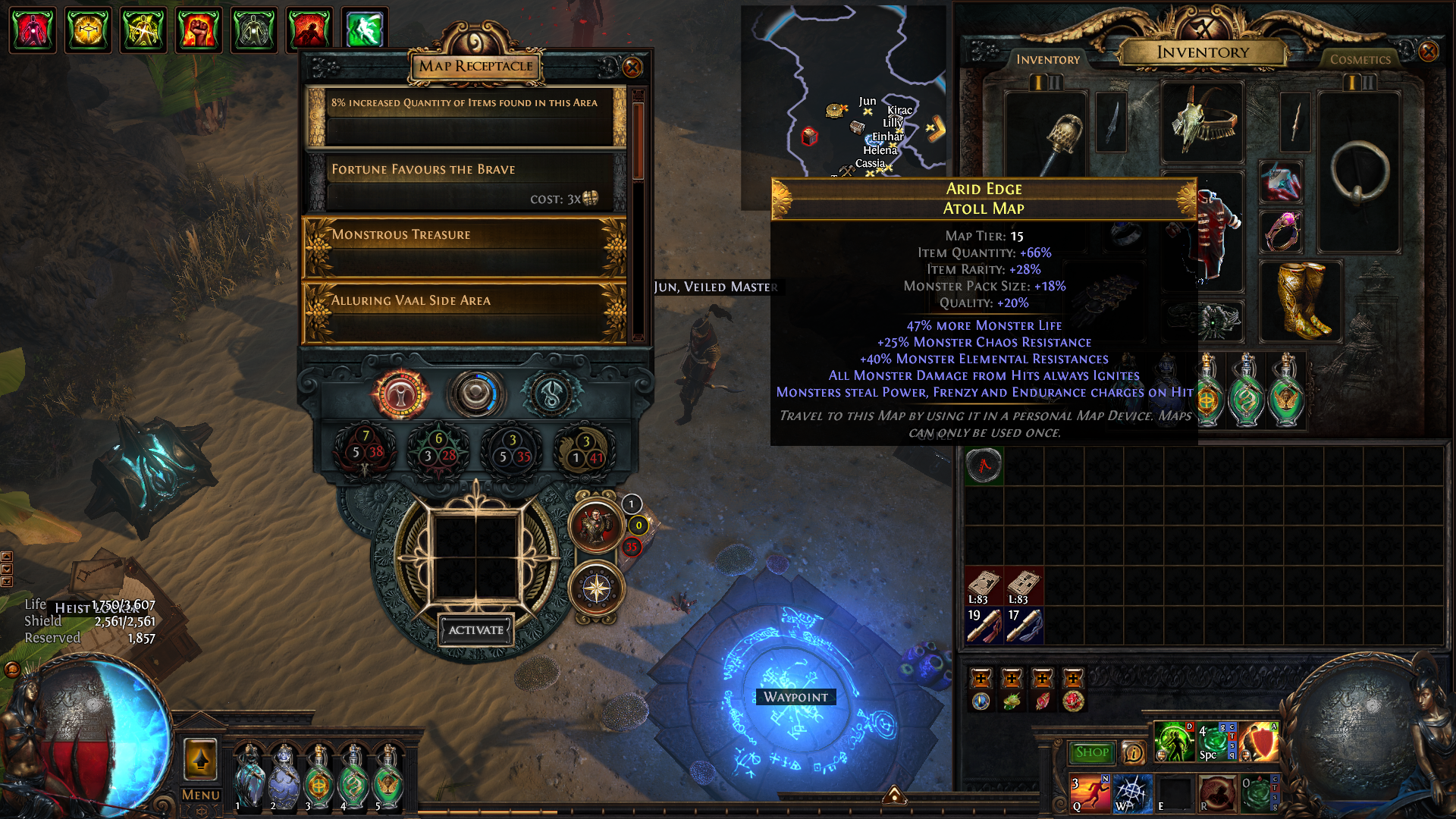A beginner's guide to Path of Exile, a dense, complicated, but rewarding ARPG
How to pick a build, fight through the first five acts, and embark on The Atlas of Worlds.

Path of Exile will be celebrating its 10th anniversary this year. For me, even with Diablo 4 just a few months away, it reigns supreme among the many contenders to the crown Diablo 2 crafted—the best action RPG on the market if you’re looking for hordes of isometric monsters and loot explosions.
However, despite clocking a truly alarming number of hours on it, I rarely recommend it to people. It’s dense, complicated, and death can come quickly and repeatedly. With 10 years of challenge leagues leaving indelible footprints of monsters, items, and mechanics, just getting started can be… a lot.
Hopefully, this will help. This guide will take you through everything you need to know to get yourself smoothly to PoE’s endgame. For many, the Atlas of Worlds is what separates Path of Exile from its competitors—a sprawling, labyrinthine system of randomly generated levels that all build on one another in a glorious cacophony. Let’s get started.
First steps and picking a build
Every three months or so, Grinding Gear Games releases a new patch, and with it, a new challenge league. All existing characters are moved to legacy servers called Standard, and everyone starts fresh with nothing. When that happens, the internet gets lit up with every PoE content creator and their cute dog putting out guides for league starter builds, and this is where I recommend new players start.
League starter builds generally are focused around two things—the ability to clear content reliably into the endgame, and the ability to do so with few resources. At the start of the league, currency will be scarce. Items will be expensive, and some stuff won’t be available. I could recommend a build to you now, like Toxic Rain Trickster or Righteous Fire Inquisitor, but sometimes a patch will send a build screaming into the stone age, so it’s best to find the new tech.
To make parsing your build a little easier, I suggest downloading Path of Building. It’s an incredible utility that acts as a kind of talent calculator on steroids, with the ability to simulate your entire build offline. With it, you can tweak your skill gems, test new pieces of gear, and a million other things (without spending your precious currency to respec). Good league starter build guides will have a pastebin link where you can load the whole build into the program and use it as a roadmap.
You’ll also want a loot filter. It doesn’t take long before the bajillions of items that drop in PoE become overwhelming, but a loot filter can help tremendously. By hiding most of the useless chaff, it can help you zero in on the useful stuff and save you a bunch of time. I recommend syncing your account with FilterBlade, which takes a lot of the busywork out of the equation.
Keep up to date with the most important stories and the best deals, as picked by the PC Gamer team.
Finally, let’s talk a bit about microtransactions. Path of Exile is free to play, but if you want to spend any serious time in Oriath, you’ll want a few basic things from the online shop. At the very least you should get yourself a currency stash tab and a couple premium tabs. These will help you organize all the little bits and bobs you pick up along your journey and keep the dozens of different currency items you pick up from cluttering up your stash. Premium tabs can also be made public,’ which is required to list your items for sale, which will be important later on. As you get toward the endgame consider a map tab and a fragment tab, all of which can be purchased for about $30 (less if you take advantage of the sale they put on around each league start). These things aren’t technically required, but will make inventory management substantially less cumbersome.

The first five acts
OK, we’re here! As you start the game, watching that good ole zombie eat the dude on the beach for the first time (ah, to be young again), you’ll notice one thing right off the bat. There’s no such thing as a gold piece. No gil, no zenny, no credits. Currency in Path of Exile comes in the form of orbs, and they all do something. This is one of the truly innovative things PoE did, and part of why the endgame is so robust and fascinating. More than any other action RPG, its crafting system is intrinsically linked with the in-game economy. With a transmutation you can make a regular item magical, adding an affix or two. With a fusing you can attempt to link its sockets. Each of these orbs is valuable in its own way, and worth picking up.
How valuable, you might ask? Head to poe.ninja to find out. Because the economy is player-driven and there’s no in-game auction house, the value of things fluctuates quickly. This site will give you a pretty good idea of the basics, though. The main thing to remember is that a chaos orb is the closest thing to a standard currency PoE has.
Items can also be useful to sell to the many vendors you’ll find in the game. Run out of scrolls of wisdom? Sell some transmutations. Need a chrome? Sell an item with a socket of each color. There are tons of vendor recipes that can get you great early items, so take a moment to familiarize yourself with them.
Other things that are valuable are gear pieces with life, resistances, move speed, and whatever kind of damage your build is using. Try and keep your life, resistances, and damage high and you’ll cruise through the first five acts. One thing to keep an eye out for is Trials of Ascendancy, which will unlock your class’s three specializations (unless you’re playing a Scion, but that’s a whole other kettle of fish). Complete the trials as you go through the game, and after you finish act 4 head to the aspirant’s plaza. By completing the labyrinth you unlock your Ascendancy, which is usually a huge power spike. You’ll do this again around levels 55, 68, and 75.
Shopping! And acts six through 10
After you defeat Kitava and head to act 6, you’ll notice that your resistances take a big hit. Unless you’ve been very lucky, it’s likely that a few of your items are, well, hot garbage. Now’s a good time to learn to trade with other players.
Head to Path of Exile trade to get started. Here you can search for items to try and shore up your resists and improve your damage for the push through to maps. Try and get your elemental resists close to capped (75), and as much chaos res as you can manage. Hopefully you found a couple alchemy orbs and maybe a chaos or two to help you out here, but if you didn’t, don’t panic. People are often willing to negotiate prices on items, particularly if you’re just starting out. Use this as an opportunity to make a new friend!
Now that you’ve got your gear sorted, you can cruise through the last five acts. You’ll unlock Pantheons as you defeat various bosses—check your league starter guide to see which ones you should use. There’s some flexibility here, so if you find yourself feeling like there are others that are more useful, feel free to experiment. I almost always use Brine King to start with, as getting chain-stunned is a real good way to get yourself killed early on.
The Atlas of Worlds
You’ll be introduced to the concept of maps in act 7, but won’t dive in fully until you defeat Kitava again at the end of act 10. Maps are items, able to be crafted on, that generate a game level when you put them in a map device. They come in 16 tiers, and contain in their procedurally generated gullets the length and breadth of what PoE has to offer. You’ll likely spend most of your time here, so get cozy.
As you complete atlas objectives (usually by completing maps of a certain rarity), you’ll unlock points to spend on your atlas tree and increase your chance to drop better maps. When you’re first getting started, check to make sure your gear is still in good shape. You’ll take another hit to your resistances after act 10, so you may need to do some house cleaning.
If you find yourself short on currency, head to the Blood Aqueducts. This humble zone is linear, with monsters that don’t pose much of a threat, and is the perfect place to farm up if you find yourself lacking some punch. The Humility card drops here, which can be turned in for a Tabula Rasa, an incredibly useful starting item that has no stats, but always comes with six linked sockets. In addition, items that drop here are the right ilvl for the chaos recipe—sell a rare (yellow) item of each slot to a vendor, you get a chaos. If they’re unidentified, you get two. An hour or two farming here should give you plenty of chaos orbs to head to the trade site and get your resistances sorted and maybe purchase your first big damage item.
Walls and final thoughts
Sometimes when you're playing Path of Exile, you hit a wall. You don’t do enough damage, don’t have the currency you need to change your build, find yourself dying to the same boss again and again. Here are some reasons that might happen, and what to do about them.
- If you’re dying a lot, everywhere, check your life and resistances. Try and keep your resists capped and get as much life as you can.
- If you aren’t doing any damage, check your gem links. Every additional linked socket increases your damage exponentially, so sometimes it’s worth having crummy stats on your body armor if you can go from 4 links to 5.
- Bleed damage stops if you stop moving. The tooltips for debuffs are useless, and there are many more examples of this, but this one gets new players the most, especially in the lab.
- If you’re dying to green stuff, it’s probably your chaos resist.
- Make sure you have a movement skill. The non-damage links are easy to overlook early on, but getting flame dash or blink arrow online will save your bacon.
- Try and wean yourself off life and mana flasks as quickly as you can. I’ll often use two life, two mana, and a quicksilver flask to start with, but each one of those you can replace with a damage or defense flask is a big deal. Keep your eyes peeled for mana on hit or leech in your passive tree.
There is a ton more I could talk about here, but I’m already concerned my editor is going to shoot me into the sun. League mechanics, master missions, pinnacle bosses, and more await you. Hopefully this guide can be a springboard to get you started in Path of Exile, and maybe just die less than Zizaran.
Russ has been playing PC games since the top of the line graphics were in ASCII and has been obsessed with them just about as long. After a coordinated influence campaign to bamboozle his parents into getting a high speed internet connection to play EverQuest, his fate was well and truly sealed. When he's not writing about videogames, he's teaching karate, cooking an overly complicated dish, or attempting to raise his daughter with a well rounded classical education (Civilization, Doom, and Baldur's Gate, of course). He's probably mapping in Path of Exile right now.




